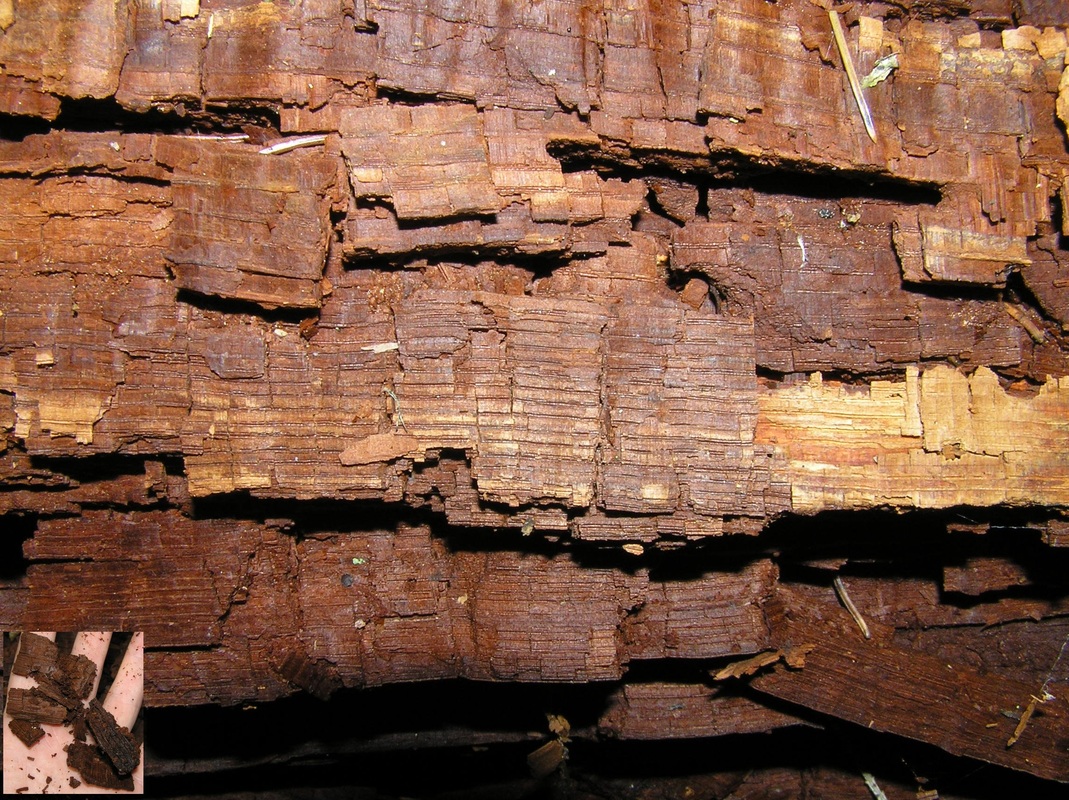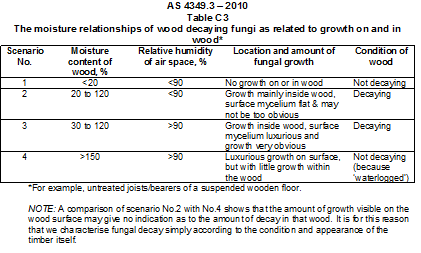What is Fungal Decay?
Fungal decay is caused by a biological attack within the wood by a certain species of fungi. The fungus can lie dormant in the timber for years until the right conditions present themselves. The conditions needed are oxygen, moisture and nutrients, with moisture being the critical component. If moisture is not present in timber, then the fungi will remain dormant, even when oxygen and the nutrients they require are abundant.

What types of decay are identifiable in Australia?
Many species of fungal decayers of timber in buildings exist, although they will usually be categorised as either brown rot or white rot. Generally, decay of floorboards is caused by brown rot fungi, decay of window joinery by either brown rot or white rot fungi and decay of weatherboards by white rot but sometimes brown rot fungi. Probably as a result of high external temperatures, a species of Coniophora (also causing brown rot) is believed to be the most common form of timber decay fungus in Australia. Not all fungi are capable of damaging wood. Furthermore, not all fungi that can grow on or in wood are capable of damaging the wood structure itself. Very few species of fungi are to be found on or in timber. Mould fungi are found only on the outside of timber but do no damage. Sapstain fungi consume only the sugars from sapwood and cause no change in the relevant strength properties of the timber. A few species of wood decay fungi damage the cellulose component of timber only; other species damage both the lignin (plastic) and cellulose components.
How is Fungal Decay identified?
The presence of vegetative growth is not necessarily an indication of the presence of decay; however, the presence of a reproductive fruiting body of the fungus is usually associated with significant wood decay warranting replacement of timber (at least in part).
Decaying wood and decayed wood are visually quite different. Decaying wood contains sufficient moisture to retain its original shape and may have sufficient strength to withstand normal loads.
In contrast decayed wood is reduced both in moisture content and size as indicated by cracking either along or across the grain or by fibres coming apart in a stringy manner. Decayed wood will have undergone considerable strength reduction and in the case of floorboards could be eventually expected to fail under the load of humans or furniture.
The inspector’s expertise combined with the use of a moisture meter and/or splinter testing may determine the severity of decay to structural timbers. The table shown indicates the moisture content identified in wood relating to conditions for fungal growth and subsequent wood decay.

What can I do to treat Fungal Decay?
Epoxy treatments and commercial antifreeze products are available to kill fungi causing fungal decay. However, replacement of the timber (especially if it is of a structural nature) and removing the source of moisture is always the preferred method of treatment.
Upon replacement of the timber, regular inspections should be conducted and the following should be considered:
- Prevent all timber from getting wet. Pay particular attention to ensure areas of likely moisture egress such as drainage defects, flashing perforations or inadequate ventilation.
- If timber replacement is required use products such as treated pine or durable hardwood.
- Apply a surface coating to timber that may be exposed to weathering.
